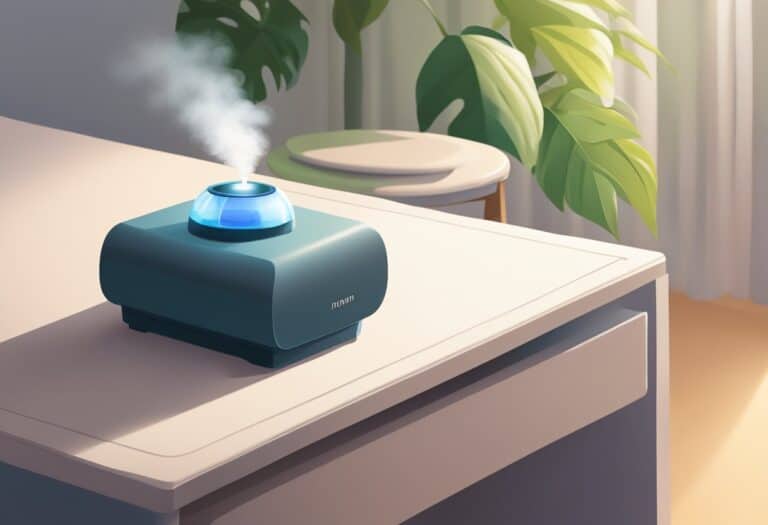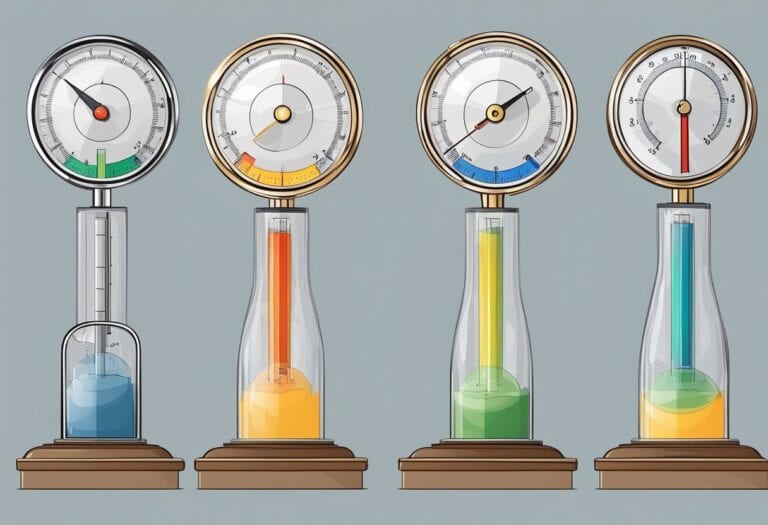Maintaining a weather station is crucial for ensuring accurate and reliable data collection. Like any sophisticated equipment, weather stations require regular checkups to function correctly.
Setting up your station in an optimal location can prevent many problems, but ongoing care is essential to catch issues that inevitably arise. For hobbyists and professionals alike, understanding the basics of maintenance can prolong the lifespan of the equipment and guarantee the quality of the data gathered.
Routine maintenance procedures are a key component of keeping your weather station operational. This includes regularly cleaning sensors, checking for corrosion or damage, and ensuring that the firmware and software are up to date. Being proactive in addressing common weather station issues such as sensor inaccuracy or data logging problems can save you from headaches in the future.
Staying informed and performing regular inspections will help optimize your weather station’s performance and ensure the precision of its readings.
Monthly, cleanse sensors and fuel with fresh batteries. Quarterly, compare voices with trusted sources, signal clear across the breeze. Yearly, deep clean and fine-tune, replace whispers lost in wear. Log their tales, spare parts at hand, online whispers amplify yours.
Setting Up Your Weather Station
When installing your home weather station, attention to detail is crucial. You need to follow the user manual closely forstep-by-step instructions and take into account essential concerns such as unit orientation and choosing the right location for accurate readings.
Installation
Begin with unpacking the weather station components and laying them out systematically. Your user manual will be your primary reference throughout the whole installation process. Adhere to its guidelines to assemble and set up the hardware correctly. Ensure all devices are securely attached and powered as directed, with solar panels — if present — facing a polar direction for optimal sunlight exposure.
Siting
Choosing the right location for your weather station is pivotal for precise data collection. Your weather station should be placed in a location that represents average conditions and avoids site-specific influences. To ensure accurate temperature and humidity readings:
- Temperature Sensors: Site them at about 2 meters above ground level and away from any artificial heat sources.
- Rain Gauge: It should be positioned in an open area clear of overhead obstructions, such as trees or buildings that might block rain or cause deflected precipitation.
For wind measurement, an anemometer should be free from obstructions, generally mounted at 10 meters above ground level. By considering these siting guidelines, you will enhance the accuracy of your home weather station’s data collection and have reliable information at your fingertips.
Routine Maintenance Procedures
Proper maintenance is crucial for the accuracy and longevity of your weather station. Regular checks and care ensure that each component functions optimally and provides reliable data.
Cleaning
Your weather station requires periodic cleaning to remain accurate. For the anemometer and wind vane, gently wipe away any debris or buildup. Your rain gauge should be kept free of leaves and bugs, and periodically checked for any blockages. For solar-powered units, ensure the solar panel is clean to maintain a strong power supply. Remember to use a soft cloth to clean the external parts to avoid damage.
Battery and Power Check
The power supply of your weather station is vital. Regularly check and replace the batteries if necessary to avoid data loss. If your station has a solar panel, it’s important to ensure it’s functioning well and is able to charge the batteries efficiently.
Sensor Verification
To ensure accurate readings, frequently verify the condition and calibration of all sensors. The humidity sensor and temperature sensor should be checked against known standards. For example, compare your station’s temperature readings with a calibrated thermometer. This kind of sensor verification helps to catch any drifts or inaccuracies early on.
Addressing Common Weather Station Issues

When maintaining weather stations, it’s crucial to address issues promptly to ensure accurate and reliable data. Below, we explore common problems and practical solutions, focusing on signal troubleshooting, calibration for precision, and the nuances of component replacement.
Troubleshooting Signal Loss
Signal loss in your weather station can lead to data discrepancies or complete transmission failures. Here’s how you can handle it:
- Check Power Supply: Ensure your station and transmitter have adequate power. Replace batteries or check for power interruptions if necessary.
- Assess Location and Interference: Obstacles between the sensor and receiver can block signals. Relocate your station to a clearer line of sight, away from interference sources like electronics and large metal objects.
- Inspect Antenna Connections: Faulty or loose connections can disrupt the signal. Secure all connections and consider replacing the antenna if wear and tear are evident.
Calibration and Accuracy
For your weather station to measure elements like temperature, humidity, and wind speed accurately, regular calibration is indispensable.
- Calibration Intervals: Calibrate your sensors according to the manufacturer’s schedule, usually once or twice a year, to preserve measurement integrity.
- Reference Devices: Compare readings with a calibrated reference instrument and adjust your weather station’s output to match the reference within acceptable ranges.
- Environmental Factors: Remember that shifts in your local environment can affect sensor accuracy. Adapt your calibration practice accordingly to accommodate for these changes.
Component Replacement
Components such as sensors can degrade or malfunction over time, impacting the overall accuracy of readings.
- Regular Inspections: Regularly inspect sensors for wear or corrosion. Prioritize immediate replacement if you notice damage or if the sensor is no longer responding as expected.
- Authentic Spare Parts: Use manufacturer-approved parts for replacements to maintain the integrity and performance of your weather station.
- Record Keeping: Keep a log of replacements and maintenance activities to help diagnose future problems and ensure no detail is overlooked during routine checks.
Properly addressing these issues will contribute to the longevity and effectiveness of your weather station, enabling it to provide precise weather data for various applications.
Optimizing Weather Station Performance
To ensure your weather station operates at peak performance, focus on maintaining data quality and keeping software up to date. This vigilant approach addresses both hardware and software aspects, directly influencing the accuracy and reliability of the weather data captured.
Ensuring Data Quality
Your weather station’s data quality directly affects decision-making in critical applications. Regular maintenance checks are essential to prevent sensor drift and detect maintenance issues that could lead to inaccurate weather data. Ensure that your station’s sensors are calibrated according to the manufacturer’s specifications, especially when dealing with extreme weather conditions.
Implement a routine to clean and inspect hardware components, such as wind vanes and rain gauges, as debris or damage can skew measurements. Additionally, consider the environmental factors unique to your station’s location and apply targeted measures to protect against those specific conditions.
Software Updates and Enhancements
Keep your weather station’s firmware and software up to date. Manufacturers often release updates that enhance the performance of your station, allowing for more precise data collection and improved interpretation of the weather conditions.
Stay informed about available hardware upgrades that can extend the capabilities and service life of your station. Prioritize updates that enhance data storage and retrieval processes since this is where your weather data’s integrity and accessibility are safeguarded.
Remember to back up your weather station’s data periodically to prevent loss during critical maintenance or unexpected hardware failures. By addressing both the physical maintenance and technological enhancements of your weather station, you can trust in the reliability and accuracy of the weather data you rely on.
Frequently Asked Questions
Proper maintenance is crucial for the accuracy and longevity of your weather station. Here we address common queries to help you keep your station in top working condition.
What routine maintenance is required to ensure a weather station functions accurately?
You should check your system at least once a year to prevent problems, ensuring that all sensors and components are clean and free from obstructions.
How often should a weather station be calibrated for optimal performance?
Calibration should be performed regularly, with some experts recommending careful planning and a robust measurement network to maintain measurement quality through frequent calibration.
What are common troubleshooting steps if a weather station sensor stops working?
When a sensor fails, check for obvious signs of damage or obstruction, and consult the manufacturer’s guidelines for specific troubleshooting steps. Verify power sources and connections as well.
How do you perform proper lubrication on a weather station’s moving parts?
Apply lubricant to moving parts following the manufacturer’s instructions to prevent wear and tear. Ensure lubricants are compatible with your weather station’s materials.
What factors affect the lifespan of a weather station and how can it be extended?
Lifespan is affected by environmental exposure, with proper installation and routine maintenance being key to longevity. Use durable materials and protect sensors from extreme weather.
What should be included in a comprehensive weather station maintenance checklist?
Your maintenance checklist must include sensor cleaning, lubrication of moving parts, data backup, battery inspection, and signal verification to ensure accurate transmission.







